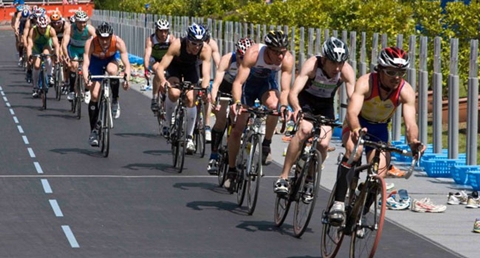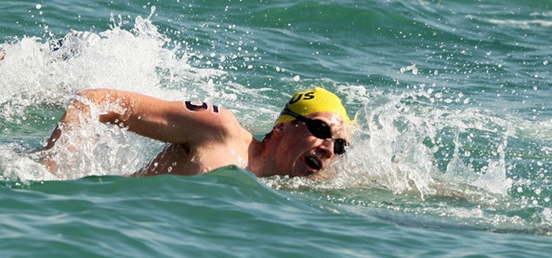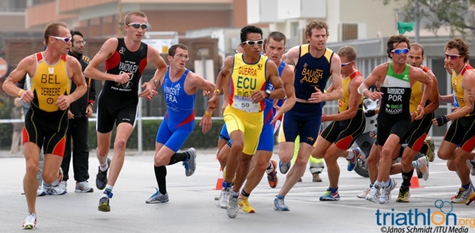Iron and Human Physiology
This article is intended to provide you with (i) an understanding of Iron in human physiology, (ii) insight into the importance of Iron to human health (iii) focus on how Iron balance is necessary for Peak Athletic Performance, (iv) a warning that many endurance athletes like Marathon Runners, Ironman Triathletes, competitive Distance Cyclists and Distance Swimmers, are Iron deficient, (v) Natural food sources for Iron and recommended daily intake, (vi) the signs of Iron deficiency and (vii) the special considerations for Women regarding Iron.
Iron (Fe) is one of the most abundant basic elements in the universe and on earth.
Iron is also the central atom in Hemoglobin that binds with Oxygen. Because of Iron, four Oxygen molecules can bind to one Hemoglobin molecule. There are approximatley 280 million moleules of Hemoglobin in each Red Blood Cell. Each Red Blood Cell can carry over 1 Billion molecules of oxygen! (Isn't nature astounding?)
The body contains more Red Blood Cells than any other type of cell. Each Red Blood Cell has a life span of about 120 days. Red Blood Cells must be continually replaced. Iron is essential to continually replenish Red Blood Cells.
See Natural Food Sources of Iron!
Iron and General Health
Iron plays several crucial roles in the body!
Oxygen Delivery from Lungs to Cells. As noted above, Iron is a key component of Hemoglobin which binds with oxygen molecules to deliver oxygen from the lungs to cells throughout the body. Excluding water, red blood cells are made of of about 97% Hemoglobin.
Production of Connective Tissue. Iron is used to help produce the connective tissues in our body, key to peak athletic performance and athletic endurance. Tendons can maintain their optimum strength when the body gets the Iron it needs.
Brain Neurotrasmitter Production. Iron is used to produce some of the neurotransmitters in our brain.
Oxygen Diffusion in Muscle Cells. The Iron in myoglobin allows the oxygen to diffuse throughout the muscle cells, key to peak athletic performance and endurance. Muscles perform better when the body gets the Iron it needs.
A deficiency of Iron limits oxygen delivery to cells, resulting in fatigue, poor work performance, and decreased immunity.
Iron deficiency may cause anemia and other health problems.
Iron for Peak Athletic Performance and Endurance
Iron balance is important to peak athletic performance.
When we are Iron deficient we may experience fatigue early during a race, run, ride or swim, muscle burning, shortness of breath, nausea, frequent infections, pale appearance, light headedness, or feelings of having heavy legs.
Competitive athletes are recommended to periodically test Iron levels. There are two types of Iron level which athletes can measure: Hemoglobin levels and Iron stores levels. Hemoglobin is the protein molecule attached to the red blood cell and is responsible for transporting oxygen to the various muscles and the lungs. Serum ferritin is the storage form of Iron in the body.
Iron Deficiency and Endurance Athletes
Many men and women who engage in the intense endurance sports such as Marathons, Ironman Triathlons, Long Course and distance Open Water Swimming, and competitive distance Cycling have marginal or inadequate Iron status.
The iron needs of endurance athletes are greater than the non-athlete due to the iron losses that occur with each footstrike, and the loss in sweat. These needs are even greater for female runners because of menses. Possible explanations for this greater Iron need include increased gastrointestinal blood loss after running and a greater turnover of red blood cells. Also, red blood cells within the foot can rupture while running. The need for Iron may be 30% greater for those who engage in intense endurance sports.
Signs of Iron Deficiency
Feeling fatigued, tired and weak.
Decreased work, school and athletic performance.
Slow cognitive and social development during childhood.
Difficulty maintaining body temperature.
Decreased immune function and increased susceptibility to infection.
Women have a Unique Need for Iron
Menstruation. Some women have a greater need for iron if they are individuals who tend to lose more iron like teenage girls and women of childbearing age, especially those with heavy menstrual losses.
Pregnancy. Nutrient requirements increase during pregnancy to support fetal growth and maternal health. Iron requirements of pregnant women are approximately double that of non-pregnant women because of increased blood volume during pregnancy, increased needs of the fetus, and blood losses that occur during delivery. The RDA for Iron for pregnant women increases significantly to 27 mg per day. Surveys have indicated that the median Iron intake among pregnant women was approximately 15 mg per day, or about half of that recommended. Low levels of hemoglobin in pregnant women may indicate iron deficiency. Hemoglobin is the protein in red blood cells that carries oxygen to tissues. Nutritionists estimate that over half of pregnant women in the world may have hemoglobin levels consistent with iron deficiency.
Infants. Iron is present in breast milk. Although human milk does not contain large amounts of Iron, it is very well absorbed. Approximately 50 percent of the Iron in mother's milk is absorbed, compared to only a 7 percent absorption from formula. By about 6 months of age, however, infants should be introduced to baby foods that contain iron.
More about Ralph Teller. See Ralph's 1Vigor Log Calendar.






